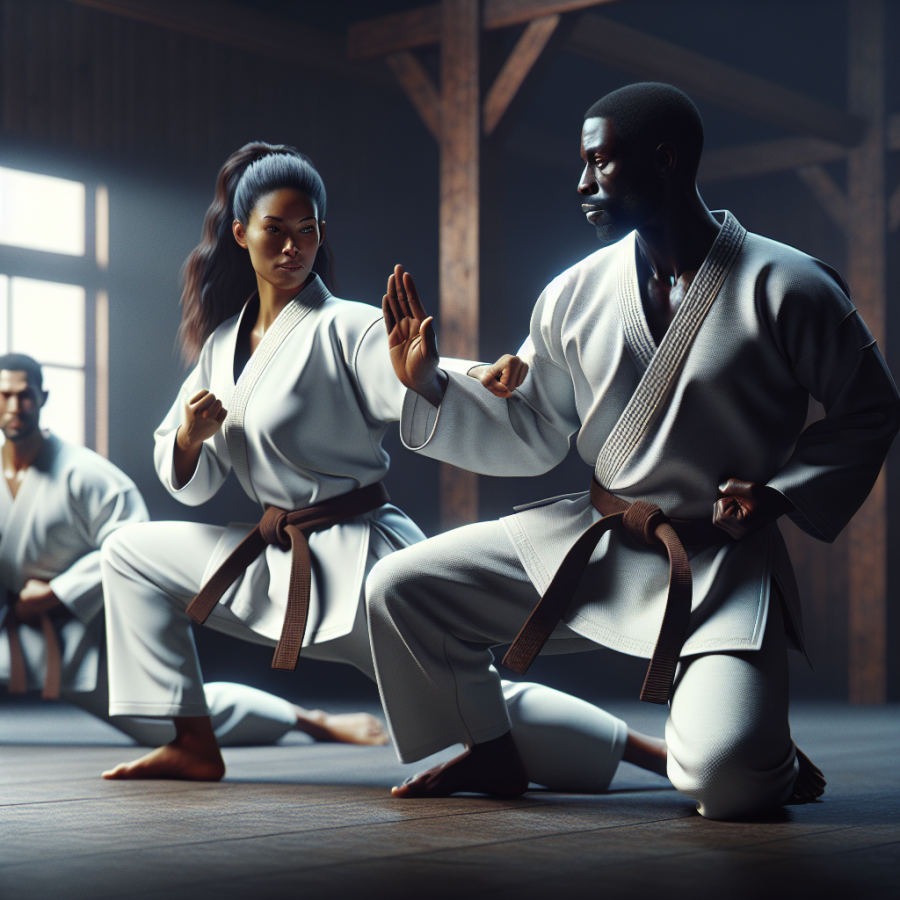Advancing Techniques and Mental Discipline: The Path to Proficiency in Tang Soo Do
As students of Tang Soo Do embark on their journey toward proficiency, a key component to their success lies in not only advancing their physical techniques but also developing a strong foundation of mental discipline. The martial art of Tang Soo Do places equal emphasis on the character development and psychological aspect of training as it does on the physical skills. Mastery of Tang Soo Do requires a harmonious balance between the body and mind, reflecting the art's philosophy and its roots in traditional Korean practices.
A crucial aspect of advancing in Tang Soo Do is the refinement of technique. This covers everything from stances and strikes to more complex forms and sparring strategies. As students progress, they learn a series of hyung (forms), which serve as a library of movements that simulate combat against imaginary opponents. Mastery of these forms requires countless hours of practice, where minute details such as hip rotation, foot placement, and breathing patterns become second nature. Each technique, no matter how small or quick, must be performed with precision and control, representative of a practitioner's skill level.
Furthermore, sparring, or kumite, allows students to apply these techniques in a dynamic and unpredictable environment. Through sparring, one learns distance control, timing, and the ability to read an opponent's movement, transforming rehearsed techniques into applicable skills in real-time engagements. Padded gear may be used in sparring to ensure safety, allowing for a full range of techniques to be employed while minimizing the risk of injury.
Mental discipline is the linchpin that holds these technical abilities together and propels a martial artist toward proficiency. The practice of Tang Soo Do cultivates a mindset of focus, patience, and perseverance. Training sessions often begin and end with meditation, providing a space to clear the mind and integrate the values of the discipline, such as respect, humility, and self-control. The meditation practice is not only a moment of calm but also an exercise in mental fortitude, as the ability to center oneself in the midst of chaos is invaluable both inside and outside the dojang.
Strength of character is also developed through the repeated affirmation of the Tang Soo Do oath and codes of conduct. These guiding principles shape not only how practitioners approach their training but also how they carry themselves in their daily lives, fostering a sense of integrity and responsibility.
The pursuit of proficiency in Tang Soo Do is a continuous cycle of learning and personal growth.
Read also:
Weighing the Pros and Cons: Are Soccer Scholarships Really Worth it?"
Cultivating the Balance: Exploring the Philosophical Foundations of Tang Soo Do
Tang Soo Do is a Korean martial art that emphasizes the development of personal character as well as physical skill. This martial art is deeply rooted in both the ancient Korean fighting techniques and values, as well as philosophical principles from Confucianism, Buddhism, and Taoism. Exploring the philosophical foundations of Tang Soo Do helps us to understand the pathways to balance and harmony that this practice entails.
At the core of Tang Soo Do philosophy is the concept of 'Yin and Yang', the Taoist idea of dualism that describes how seemingly opposite or contrary forces may actually be complementary, interconnected, and interdependent in the natural world. In the context of Tang Soo Do, Yin and Yang symbolize the balance that martial artists strive to achieve between the physical and the spiritual, the hard and the soft, the internal and the external.
The physical training in Tang Soo Do is rigorous and demands a great deal from practitioners. It requires the cultivation of strength, flexibility, and technical skill. Techniques such as punches, kicks, and blocks reflect the 'hard' aspect of the art, known as 'Soo'. They are explicit expressions of power and are practiced to perfection.
In contrast, the 'soft' aspect, referred to as 'Tang', represents the fluidity, grace, and mental discipline that a practitioner must foster. This is where the philosophical underpinnings come into play. The soft elements are reflective in the forms or 'hyungs' that teach the martial artist to move with precision and purpose, but also with an awareness that mirrors the flow of life’s energies.
Meditation and breathing exercises are also integral to this martial art, connecting the practitioner to the deeper aspects of Tang Soo Do. The breathing techniques are not only crucial for improving physical performance but also for calming the mind and cultivating inner peace. Mastering the breath allows one to direct their energy or 'Ki', promoting health, vitality, and a harmonious balance within.
The Dojang, or training hall, is more than just a place of physical exertion; it is a space where respect, etiquette, and humility are taught and practiced. These social virtues stem from Confucianism, which places a high value on social harmony and proper conduct. From bowing to fellow students and instructors to executing techniques with controlled power, students are taught to embody respect in every action.




